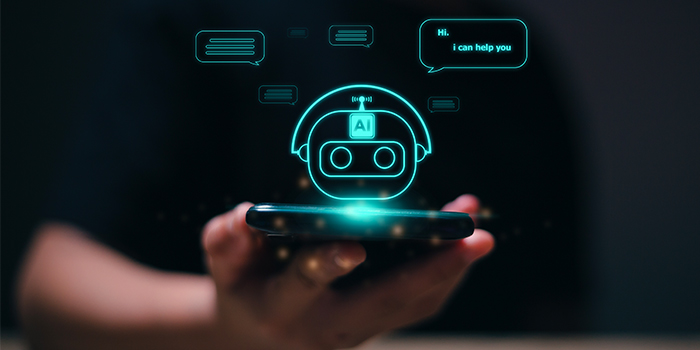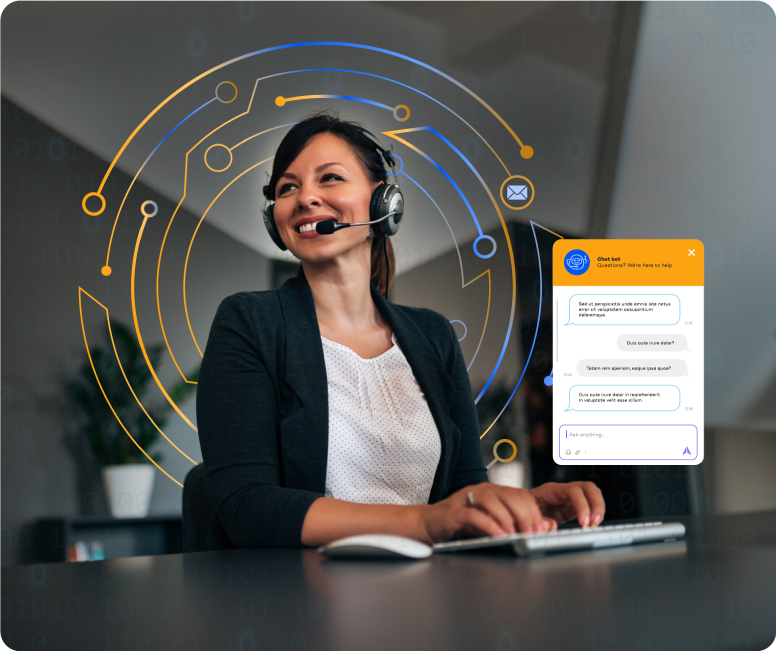Table of Content
TABLE OF CONTENTS

In the world of Customer Experience (CX), chatbots have become a game-changer, enhancing customer satisfaction and operational efficiency for businesses. As a software architect with over 13 years of experience implementing Oracle CX solutions, I’ve seen firsthand how chatbots can revolutionize customer interactions. However, to ensure your chatbot is delivering the desired results, it’s crucial to monitor specific metrics. Here are seven key metrics to track for a successful chatbot implementation, along with example values and success stories from my experience:
1. Total interactions
- Total interactions measure the number of conversations your chatbot has with visitors. This metric is a good indicator of your chatbot’s impact and usage trends. If more people are using your chatbot, it’s probably delivering value and may deserve even more investment. For instance, a company that sells merchandise and magazine subscriptions saw their total interactions increase by 30% within the first three months of implementing a chatbot. This indicated a high level of user engagement and led to an increase in customer satisfaction.
2. Average chat duration
- Average chat duration measures the average length of time users spend talking to your chatbot. This metric is a Goldilocks metric; you don’t want it to be too short or too long. If conversations are too short, your chatbot probably isn’t delivering value. The same goes for if conversations are too long. For a company that manufactures B2B products, we aimed for an average chat duration of 3-5 minutes. This allowed enough time for the chatbot to provide detailed responses without prolonging the interaction unnecessarily.
On-demand webinar
Automating Customer Service with Quiq: Empowering CX through Customer-Centric AI
Watch Now
3. Goal completion Rate
- The goal completion rate measures how often users achieve their intended goal when interacting with the chatbot. This could be anything from finding information, making a purchase, or resolving a complaint. A high goal completion rate indicates that the chatbot is effectively helping users achieve their objectives. Target a Completion Rate of 80% or more, demonstrating that the chatbot successfully guides users through their queries to resolution.
4. Missed utterances
- Missed utterances are instances where the chatbot fails to understand the user’s input. A high number of missed utterances could indicate that the chatbot’s Natural Language Understanding needs improvement. Regularly monitoring this metric can help identify areas for improvement in your chatbot’s language model. For the B2B product manufacturer company, we aimed to keep missed utterances below 10%. When we noticed an increase in missed utterances, we refined the chatbot’s language model, which led to a decrease in missed utterances and an increase in customer satisfaction.
5. Human takeover rate
- The human takeover rate measures how often a human agent needs to intervene in a chatbot conversation. A high human takeover rate could indicate that the chatbot is struggling to handle user queries effectively. This metric can help identify areas where the chatbot’s capabilities could be enhanced. For the merchandise company, we aimed for a human takeover rate of less than 20%. When we noticed a higher rate, we enhanced the chatbot’s capabilities, which led to a decrease in the human takeover rate and an increase in operational efficiency.
6. Customer satisfaction score (CSAT)
- Customer satisfaction is a key metric to track in your chatbot analytics. You can ask your customers to rate their experience with your chatbot after finishing a conversation. These satisfaction scores are important for refining your chatbot strategy. Looking at topics or issues where customers provide lower scores will show you where you can improve. Strive for a CSAT score of 4 out of 5 or higher, reflecting high customer satisfaction with the chatbot’s performance.
7. Retention rate
- The retention rate measures how often users return to use the chatbot. A high retention rate indicates that users find the chatbot useful and are choosing to use it again. This metric can provide insights into the long-term value your chatbot is providing to users. For the B2B product manufacturer company, we saw a retention rate of 70%, indicating that B2B customers found the chatbot useful for tracking orders and troubleshooting product malfunctions.
Conclusion
Monitoring these metrics will help you understand how effective your chatbot is at serving your customers and where improvements can be made. Successful chatbot implementation is not a one-time effort; it necessitates continuous monitoring, evaluation, and optimization. By vigilantly tracking the key metrics discussed in this blog, you can steer your chatbot towards success, elevate customer satisfaction, and enhance overall operational efficiency.
Stay tuned for more insights on CX Unleashed, where we continue to explore the ever-evolving landscape of customer experience solutions.
Anuj Behl
Consulting Architect
Anuj is a CX and Data Architect with over 15 years of experience designing, implementing, and operationalizing customer experience systems across telecom, financial services, healthcare, and retail. As an Enterprise Architect at Mastech Digital, he works at the intersection of CX analytics, journey orchestration, and AI-driven automation, helping enterprises translate customer data into real-time decisions and measurable operational change. His expertise spans Oracle CX platforms, conversational AI, VoC analytics, and closed-loop CX execution.
-2.jpg?width=240&height=83&name=Menu-Banner%20(5)-2.jpg)
.jpg?width=240&height=83&name=Menu-Banner%20(8).jpg)

